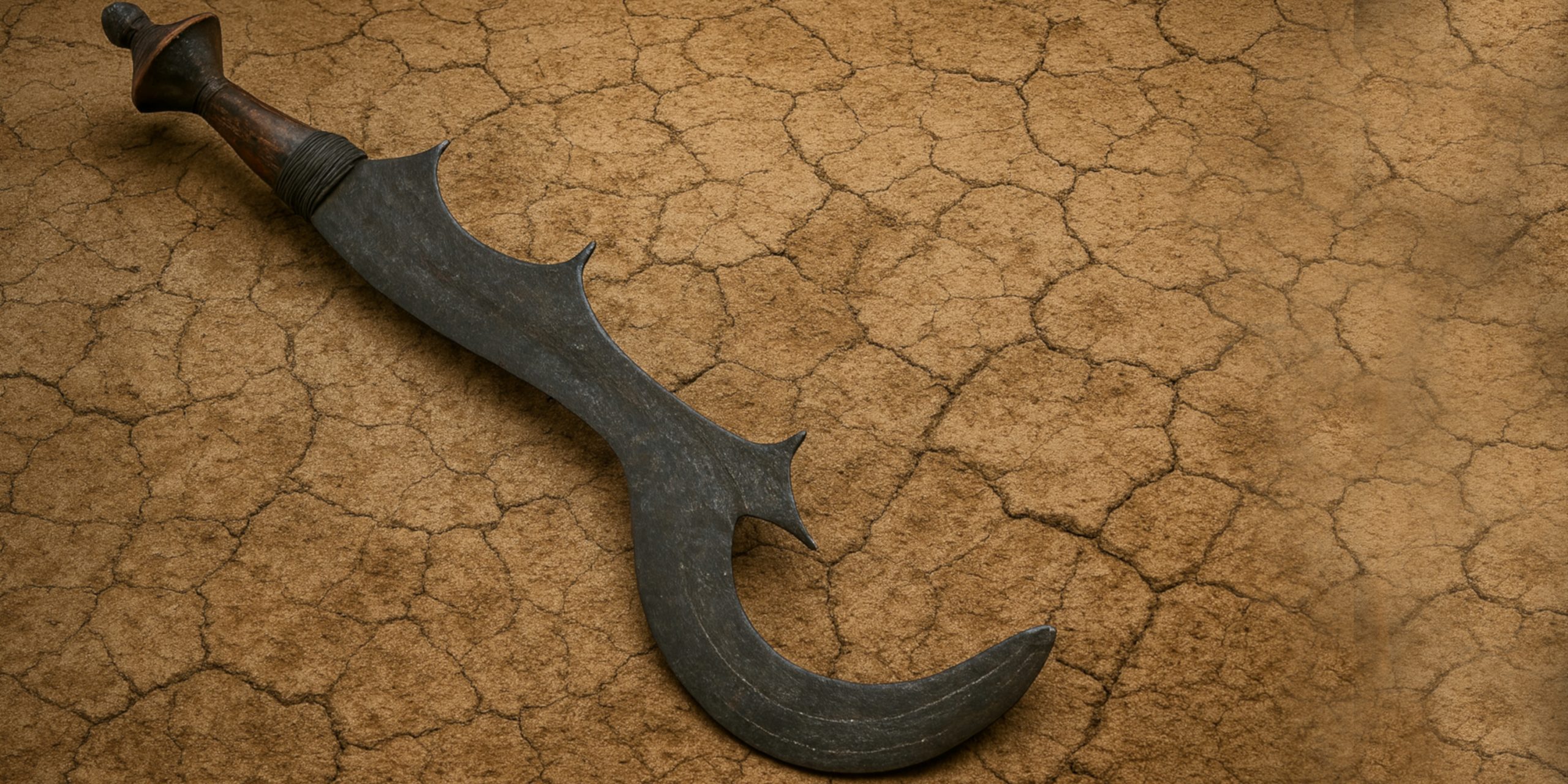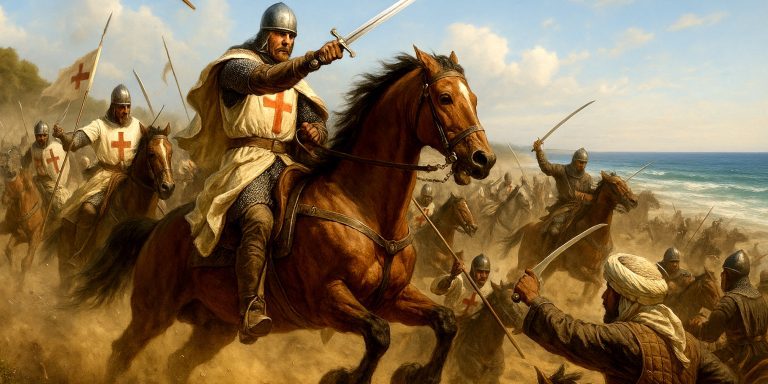
The Ngala execution sword, also known as the Ngulu, is a distinctive and ceremonial blade originating from the Congo Basin. Crafted and wielded by groups such as the Ngombe, Doko, and Ngala, it served a singular and chilling purpose: execution. Over time, its role shifted from a tool of capital punishment to a ritual object of authority and symbolism.
Specification
| Feature | Description |
|---|---|
| Blade Shape | Large, sickle-like iron blade; curved cutting edge; thick, non-cutting back; often single-edged but sometimes dual-bladed |
| Handle | Bound in metal wire; typically ends in two large wooden buttons with a smaller terminal button |
| Size & Weight | Approx. 660 mm in length; around 510 g in weight (varies by example) |
History and Evolution
The design of the Ngala sword draws on older Central African blade forms, particularly ceremonial knives and throwing blades like the Banza. It was not used in battle but instead reserved for executions carried out by tribal leaders or executioners. The method was ritualistic: the condemned sat with their head strapped to a bent tree, which was then released to position the neck for a single, forceful stroke.
During the colonial period, especially under the rule of the Congo Free State, public executions of this nature were officially banned. This shift changed the sword’s function. Rather than being discarded, it took on a ceremonial role, used in dances such as the Likbeti, and for ritual animal sacrifices symbolising closure of conflict or restoration of order.
Advantages and Disadvantages
Advantages:
- Designed for a powerful single strike
- Highly effective for its intended ritual use
- Carried strong symbolic and psychological presence
Disadvantages:
- Lacked practicality in combat
- Too heavy and unbalanced for versatile use
- Functionally obsolete outside ceremonial or judicial context
Comparison with Similar Weapons
While the Ngala sword shares some superficial similarity with the ancient Egyptian khopesh due to its crescent-shaped blade, the comparison ends there. The khopesh was a battlefield weapon, forged for slashing and close combat. The Ngala sword, on the other hand, was never intended for warfare. It is more accurately compared to European execution swords, long, heavy ceremonial blades used solely for beheading, but differs in its exaggerated curve and tribal artistry.
Legacy
The Ngala execution sword now stands as a cultural relic of Central Africa. Its significance lies not only in its brutal function but in its craftsmanship and evolution. The ornate designs often etched into the blade and the careful shaping of its structure mark it as a work of ceremonial artistry. Though no longer used in any practical capacity, it remains a powerful symbol of traditional authority, law, and ritual life.
Where to See
Examples of the Ngala sword can be seen in major ethnographic collections, including:
- The Saint Louis Art Museum (USA)
- The Museum of Fine Arts, Boston
- Private galleries and collections specialising in Bantu or Congolese artefacts
These swords are often found in museum displays focused on sub-Saharan African tribal life and ceremonial traditions.
Collectors’ Guide and Auction Prices
What to Look For:
- Provenance linked to the Ngala, Ngombe, or Doko peoples
- Intact metal wire wrapping and original wooden grip elements
- Minimal rust or damage to the blade surface
- Signs of ceremonial or judicial use (not just decorative replicas)
Typical Prices:
- Mid-range pieces: €300–€500
- Well-documented ceremonial examples: €800–€1,500
- Exceptionally ornate or double-bladed specimens: potentially over €2,000
Prices fluctuate based on rarity, blade decoration, and authenticity. Swords with documented colonial-era origins or verified ceremonial use carry greater value.
Conclusion
The Ngala execution sword occupies a unique space in the world of ethnographic weapons. It is not simply a blade, but a statement of power, justice, and transformation. From a practical tool of execution to a symbolic object of tribal identity, it remains a haunting but vital part of Central Africa’s material heritage. For collectors, historians, or cultural institutions, it offers both aesthetic complexity and historical depth.



